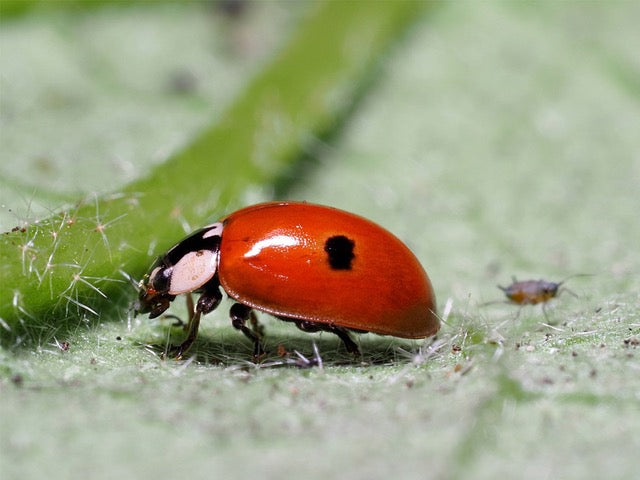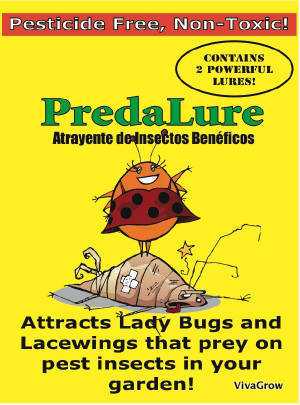Ladybugs

5 Reasons why we don’t sell ladybugs
Ladybugs are well known and loved by many people all over the world. They are a sign of good fortune and health. They are welcome in gardens as a natural predator of aphids and other pests. Then why is it not a good idea to purchase them for biocontrol? Following are the five top reasons why we don’t sell ladybugs for biocontrol.
1. Almost all ladybugs are harvested from the wild, and it is against the law to harvest wildlife without a permit. The two main species are the convergent ladybug, Hippodamia convergens, and the Asian ladybug, Harmonia axyridis. In the future, the California Department of Fish and Wildlife hope to have regulations on ladybug harvest, but at this point, no laws exist.
2. Ladybugs can vector disease and introduce parasites. Transporting an insect caught in the wild to a garden or greenhouse can expose the native insects to harmful parasites or pathogens, shortening their lifespan and reducing their productivity.
3. Ladybugs don’t stick around. Ladybugs are harvested during the winter months in California while they hibernate or diapause. When they are released into a new environment, they inherently migrate out of the area within 1-2 days. This is built into their system: hibernate, migrate, feed and then lay eggs, in this order. Inherently disperse.
4. Disruption of native habitat. No one knows the effects of removing millions of ladybugs from the wild each year. What happens to the native wildlife populations that depend on ladybugs for food? What happens to the ecosystem? One study suggests that the removal of ladybugs from the California foothills each year could lead to pest problems for farmers in the central valley, thus increasing the use of pesticides (Hagen, Kenneth S. 1954).
5. Competition with local beetles and other insects for food. It seems like there are always too many aphids, but introducing a wild species could disrupt the native populations, robbing them of valuable resources.
There are many other beneficial insects that are available from Sound Horticulture for biocontrol. These insects are raised in insectaries and have proven effective for many growers over the years. The most likely replacement for the ladybug is the lacewing larvae, Chrysoperla rufilabris, another generalist predator. Lacewing larvae can consume up to 200 soft-bodied insects per day and will not fly away. They are sold as eggs, larvae or adults. Delphastus pusillus is a ladybird beetle that preys on whitefly, Stethorus punctillum is a tiny ladybird beetle that preys on spider mites and Cryptolaemus montrouzieri is a predator beetle for mealybugs.
Cultivating a wide variety of pollen-rich blooms will attract ladybugs, as well as using a pheromone lure, Predalure, to bring in the beneficial insects. Please consider the risks when purchasing ladybugs online. Insects are essential for our survival. As E.O. Wilson once said “It’s the little things that run the world”
Potential Risks of Releasing Convergent Ladybeetles, Xerces Society


Lacewing larvae feeding

Leave a comment